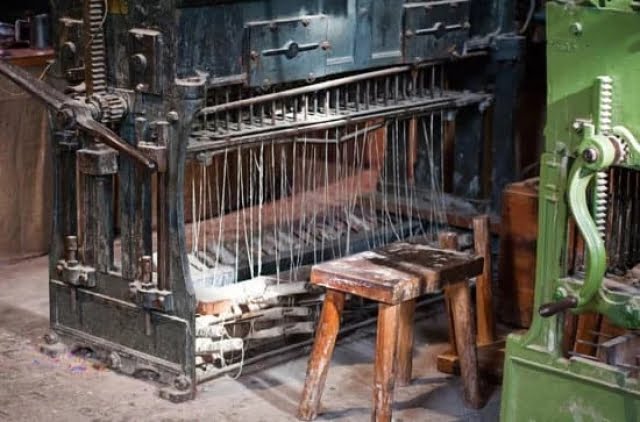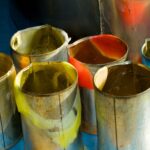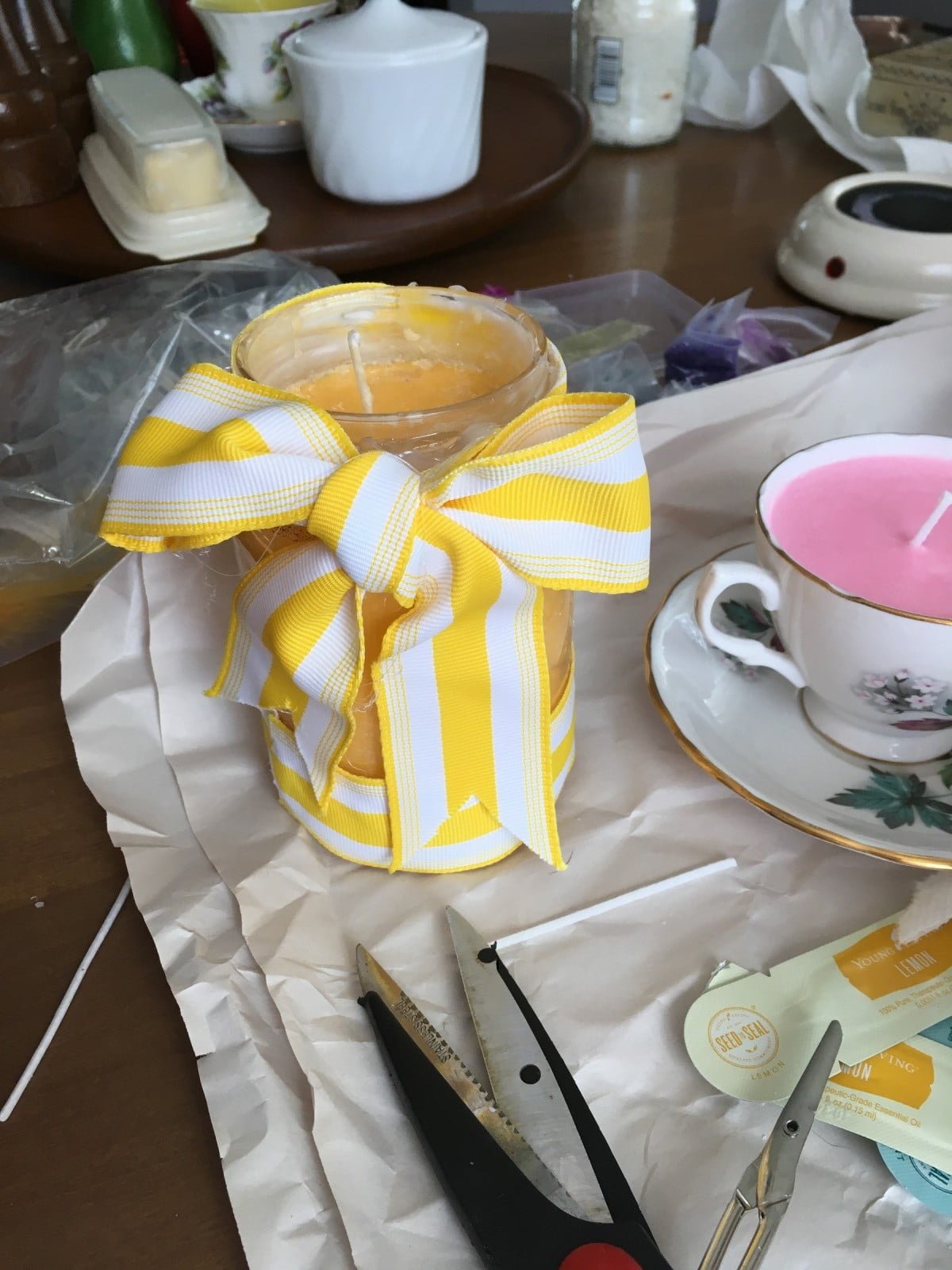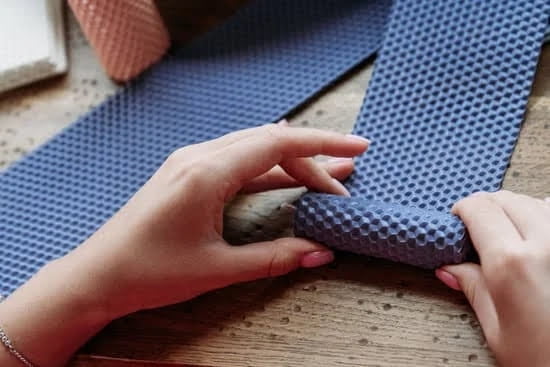Beeswax candles have been around since ancient times. Ancient Egyptians used beeswax to make their lamps and other lighting items, while the Romans applied the same substance for making funeral effigies. The versatile wax has long been touted for its ability to generate natural scents that were thought to improve moods, clear airways, and ward off negative energies.
Nowadays, beeswax continues to be a popular choice when it comes to choosing waxes for candle making. The process of making beeswax candles begins with gathering wax from bee colonies and then carefully refining it using a natural purifying process.
Homemade Beeswax Candle Techniques: Overview of types of wicks, melting techniques and molds Making your own beeswax candles is fairly straightforward if one uses the right technique to ensure that both wick and wax end up burning smoothly with minimal soot residue left behind.
The two main varieties of wax that are used in candle-making are paraffin and stearic acid; however, some prefer using only all-natural beeswax like the kind gathered directly from the bee colonies or harvested from retail stores, as this eliminates any chances of potential sooting caused by harmful chemical residues left by paraffin-based products upon burning.
With regard to wicks, most beginners start out with pre-tabbed cotton core or paper core technology in order to create their own basic containers for their candle designs.
Moving on to the actual melting process itself; this often involves using either a double boiler or an electric heating device depending on the nature of the material being heated (allowing time for gradual melting without overheating).
Last but not least; molds can also play a major role in creating successful end products; these come in different shapes and sizes which provide great flexibility in terms of producing multiple unique pieces at one time per cast (just simply pour melted materials into respective chambers).
Uses & Benefits: Centuries old uses & benefits + modern day applications It’s no secret that Beeswax candles are seeing an uptick in popularity recently due to their seemingly endless amount of natural benefits associated with use.
Not only do Beeswax candles produce far less pollutants than traditional petroleum based products (like Paraffin) upon combustion but they also carry far superior scent profiles along with purported health benefits such aiding asthma sufferers due to increased aeration support via burning emissions as well as general indoor air quality improvements thanks to natural fragrances derived from plant extracts found within them.
In addition to domestic settings however Beeswax Candles also serve practical emergency roles such helping aid during storms/power outages by providing temporary light sources until power return amongst other various uses stretching back centuries due their near flawless combustion properties even when subjected excessive conditions including immersion in water.
Thus demonstrating both unique applicability capabilities alongside overarching sustainability advantages compared against conventional alternatives making them increasingly attractive for B2B consumption purposes source should situation demand it across various industries ranging from defense contracting hospitals spiritual institutions alike.
Advantages of Beeswax
Beeswax is one of the most popular materials used in candle making because of its unique characteristics. Beeswax has many advantages over other waxes, making it an excellent choice for creating two and three-dimensional candles.
One advantage of beeswax is its natural ability to retain scent. The wax has a natural sweetness that helps keep the scent inside and prevents it from fading quickly. Additionally, beeswax candles typically have a better burn rate than other types of wax, producing more heat and light. Their higher melt point also lets them burn at lower temperatures than other materials.
Another benefit of beeswax is its affordability compared to other materials. Beeswax generally costs less per pound than paraffin or soy wax, but still offers superior results in terms of candle quality and life span. Furthermore, beeswax has a long shelf life; if stored properly it can last for up to two years without deteriorating.
Finally, beeswax produces less soot and smoke when burned compared to paraffin or soy wax. This makes the candles not only safer to use but also more enjoyable due to their reduced messiness.
Benefits of Using Beeswax For Candle Making
- Retains scent better than other materials
- Burns longer and hotter than most waxes
- More affordable than alternatives
- Long Shelf life
- Produces less soot and smoke
Choosing the Right Beeswax
When it comes to choosing the best wax for your beeswax candle, there are several considerations that should be taken into account. Beeswax is produced in various colors and textures, each with their own unique properties. Depending on the type of candles you’d like to make, one type may be more suitable than another for an optimal result.
There are three main varieties of natural beeswax: yellow, white, and ivory. Yellow beeswax is a bit harder than the other two and often contains some degree of impurities which can lend it an inviting honey-like aroma. It also has an excellent scent throw when used in candles, allowing the aroma of essential oils to really come through.
White beeswax is completely filtered and doesn’t contain any byproduct dyes or perfumes so its aroma won’t overpower scented candles like yellow can sometimes do. Ivory beeswax lies somewhere between the other two varieties-it’s a bit softer than yellow but stiffer than white and usually bleaches naturally over time as it hits oxygen.
The quantity of wax you need is also a factor when making beeswax candles as different amounts yield different results. For instance, when melting larger blocks of wax to use in molding candles it produces a softer feel than if you were using pellets which have already gone through processing prior to purchase.
The difference isn’t drastic but for certain applications (such as rolled tapers) it’s something to be aware of when selecting your wax choice. Additionally, larger chunks of wax don’t require extensive melting since they’re already soft while pellets must go through a longer heating process before becoming malleable enough to shape into desired designs.
Last but not least, it’s important to take into account what kind of scent you prefer with your candle-making projects since different types carry different aromas that can either complement or detract from their overall character depending on what materials you choose to work with.
Generally speaking, most brands market fragrances designed specifically for use in creating natural beeswax candles such as lavender or orange blossom scents although you could also opt for plain unscented wax if desired for an odorless experience.
Supplies Needed
In order to get started with making your own beeswax candles, you’ll need a few supplies. These supplies are relatively easy to find, depending on where you live. Here is a list of the items commonly required when making beeswax candles:
- Beeswax – This will be the main ingredient for your candles and can be either be purchased in block form or pellets from craft stores or online retailers.
- Wick – You will need wick strings that are 1 to 2 feet long. It’s important to choose one based on the type of candle you want to make.
- Container – You can use any container or form that can withstand heat while holding liquified wax. containers such as mason jars work great.
- Double Boiler – This is necessary for melting down the beeswax before pouring it into a container.
- Thermometer – A thermometer will help you regulate the temperature so that your wax remains at an optimal melting point
- Coloring/Fragrance (optional) – When adding pigment or fragrance, be sure to choose ones that are specifically designed for beeswax candles
In addition to finding these items online, they may also be available in craft stores and hobby shops. Be aware of buying online as many stores may inflate their prices due to shipping costs. Remember to check for any deals that could save you money when looking for supplies. If buying in person, some of these items may already come in a set, with everything you need included within it (such as double boilers and thermometers).
To choose suitable wicks, research which size would best match with the type of Beeswax Candle you wish to make; consider factors such as height and diameter if using moulds or pre-made containers like mason jars. It is critical that wicks are tested extensively before making any larger batches; this ensures they provide an even burn that does not smoke excessively nor cause uneven dripping leaving behind incompletely melted sections over time.
Many candlemakers use commercially produced mechanical wicking systems which decrease user error, creating consistently superior candles each time.
Melting and Mixing
Melting and combining wax for the production of beeswax candles is one of the most important steps in candle-making. In this step, wax is heated to a molten state, combined with other ingredients, and then cooled down and poured into candle molds. This process can involve both melting some type of solid wax (such as beeswax) as well as adding elements such as colors or scents.
Melt the Solid Wax
The first step is to melt your desired wax in a double boiler or a dedicated wax-melting pot. Depending on what type of wax you are using, it will melt at different temperatures.
Beeswax typically melts around 145° F – 160° F. Care should be taken when melting the wax as too high of heat can cause it to scorch or become brittle after cooling. Once thoroughly melted, turn off the heat source and transfer it into another container for further processing.
Adding Color
Colorants such as dyes or pigments are then added directly into the molten liquid wax in order to create colored candles. When incorporating colorants, begin by adding small amounts until desired shade is achieved – in general ½ teaspoon per 1 pound of melted wax works well. Additionally, be sure to stir mixture frequently while adding colorants as they will sink to the bottom if not mixed properly which could lead to an uneven color distribution throughout your finished product.
Incorporating Scents
Scent oils or natural essential oils can also be added during this step to infuse fragrance into your beeswax candles. Most scent oils are incorporated at a ratio of 6 drops per 1 pound of melted beeswax, but it’s best practice to test out different amounts until you find your desired concentration - every scent oil has its own recommended usage rate so adjust accordingly based on preference and product recommendations from manufacturer’s label.
Stirring regularly while pouring in scent oil will help create an even blend throughout your batch of candles ensuring that each one smells great.
Pouring the Wax
Pouring the wax for making beeswax candles is one of the most important steps in creating quality, long-lasting candles. The right technique and the correct temperature when working with wax can help make the candles look beautiful and maximize the burning time.
In order to ensure that the candled turn out correctly, it’s important to keep a consistent pouring temperature. Beeswax should not be overly hot when entering the mold or container and be as close to 212° F as possible in order to prevent cracks or fractures on cooling.
It is also recommended that you use molds specifically designed for candle making, which are usually shallow and provide even heat conduction throughout. Metal molds also help to reduce air bubbles, ensuring an even finish as well as a smooth texture when cooled.
Attaching Wicks: Description of any special tools or techniques
A wick plays an important role in properly filling a candle with wax while allowing it to burn consistently. The wick must be able to absorb large amounts of molten wax without clogging or falling apart, which makes buying pre-tabbed ‘candle’ wicks ideal when making beeswax candles.
These wicks usually have metal core that have been specially treated so they stay upright during burning and performs accordingly without smoldering. It is also essential that this type of wick should not be cut too short nor too long; typically a length 3/4 inches longer than the circumference of your mold works best.
To secure the wick properly into your candle mold, melt some wax onto a spoon along with your tabbed wick attached at its base before pressing it firmly into the center of your mold where it will remain upright on cooling down.
An additional method you may prefer would involve using a metal stuck pierced throught he bottom of your mould which can create holes for attachment point for the pre-tabbed wicks; however this requires somewhat skilled application measuring length between each candle in order to obtain consistant results throughout consecutive production runs.
Decorating and Personalizing
Beeswax candles are becoming increasingly popular, both for decoration and relaxation. They are all-natural, look beautiful when lit, and are environmentally friendly since beeswax burns cleanly without releasing toxins into the air. One of the best things about making your own beeswax candles is that you can customize them however you like to create something truly special. Here are a few ideas for how to personalize and decorate homemade beeswax candles.
To add a decorative touch to your candles, consider using specially designed molds that will give them unique shapes or texture. You can find silicone molds in a variety of shapes, from traditional dripping candle styles to festive holiday designs.
If you don’t want to use molds, then try different wax dipping techniques such as layered colors or drip dyeing with colored waxes; these will give your candles interesting looks while avoiding molds altogether. In addition, there are many other decorations available like paint pens or stencils that allow you to draw patterns directly onto the surface of the wax before it sets up.
For extra personalization, take advantage of scent options for your beeswax candles. Whether you decide make scented containers of solid beeswax blocks which can be added to existing burning containers or used on their own or buy essential oils or fragrances products specifically formulated for aromatherapy in candlemaking endeavors, adding an individual signature scent will bring something special and unique to your homemade creations.
For even more personalized touches choose from different wicks depending on the size of your candle and what type of burn that you desire; be sure that whatever wick length is chosen is also appropriate for the container size so that it burns properly instead of overflowing the container with flames at random intervals throughout its lifetime.
These are just a few ideas for personalizing homemade beeswax candles – but there’s no limit to how creative you can get with decorations and fragrances. With enough imagination and experimentation – or reference from relatives who have passed down traditions around home crafts-you can make any beeswax candle unique and meaningful in its own way.
Conclusion
Beeswax candle making is a rewarding and fun process for both amateur and professional crafters. It provides the opportunity to create unique, personalized candles with distinctive aromas and distinct shapes giving you flexible options for décor.
Additionally, there are numerous health benefits associated with burning beeswax candles – the natural wax emits no toxins while burning and can produce negative ions that help purify indoor air quality. In addition, beeswax is often more affordable than many other candle making supplies such as paraffin waxes, creating an even better value with this hobby.
When getting started in the art of beeswax candle making it’s important to understand that a few additional supplies will be needed besides just the beeswax itself – wicks, molds, thermometers, melting pots etc to properly craft your wax into candles quickly and safely. As each of these tools play an integral part in the candlemaking process it’s wise to invest upfront in quality products so that your end results are long lasting and aesthetically pleasing.
One way to do this is to purchase kits specifically tailored towards beginner beekeepers which usually consist of all the necessary equipment as listed above plus instructions for success.
Finally when crafting candles with beeswax seek out local suppliers who offer chemical free product as well as those who support sustainable beekeeping practices when possible – for instance small family run apiaries or environmentally conscious companies. This approach will not only ensure that you have pure wax every time but also help protect our planet’s precious honeybee population – proving that real beauty comes from within.
What’s more many suppliers also provide educational material such as blogs or tutorials allowing creative expression even beyond crafting candles alone.
In summary Beeswax candle making is a charming hobby possessing a treasure trove of pros – both functional and health related – yet practical considerations such as investing in proper tools upfront must be acknowledged Furthermore when sourcing potential materials keep environmental factors in mind whenever possible. Finally don’t forget to make extra time to explore all possibilities this enchanting activity has too offer.

Welcome to my candle making blog! In this blog, I will be sharing my tips and tricks for making candles. I will also be sharing some of my favorite recipes.





